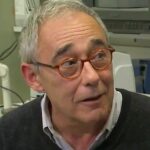Link to Pubmed [PMID] – 23735050
FEBS J. 2013 Sep;280(17):4036-50
The muscle satellite cell is essential for skeletal muscle regeneration. It is located on the muscle fibre, under the basal lamina as a quiescent cell, which becomes activated after injury, when it leaves the fibre, proliferates, and either undergoes myogenesis to form new fibres or reconstitutes the satellite cell pool. In this review, we discuss the cellular environment of the quiescent cell, including the extracellular matrix, which constitutes its niche. Cell adhesion molecules and some signalling pathways reinforce its quiescent state, whereas other signals lead to activation. We discuss how the satellite cell is ready to respond with the appropriate receptors, but protects its quiescence by mechanisms that include immobilization of ligands by extracellular matrix components and synthesis of inhibitors for intracellular signalling pathways and for metalloproteinases that break down the matrix and promote ligand processing and receptor activation. The quiescent satellite cell is also well protected against toxins and oxidative stress. It has a low metabolic rate, as shown by few active mitochondria and anaerobic glycolysis. Different subpopulations of quiescent satellite cells can be distinguished on the basis of cell surface markers and stem cell-like properties. We discuss the latter in the context of the small proportion of satellite cells that express high levels of Pax7, or that are derived from cells that have never activated the Myf5 myogenic determination gene. However, many quiescent satellite cells transcribe Myf5, but do not enter myogenesis because of post-transcriptional regulation, which prevents Myf5 protein accumulation. Post-transcriptional regulation, through microRNA repression of a potential cell cycle activator, further illustrates how these cells are ready for action.

